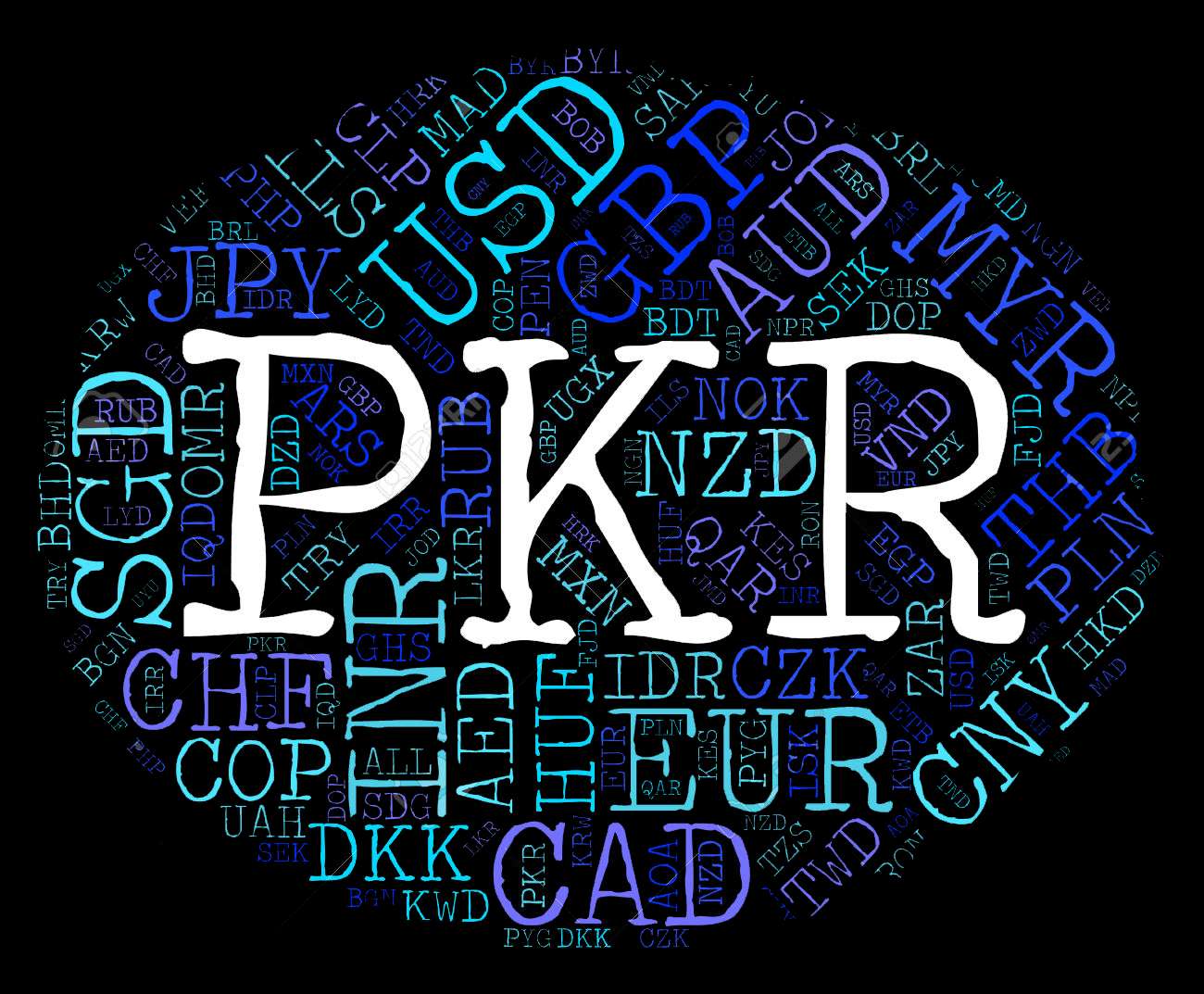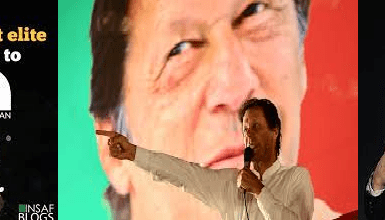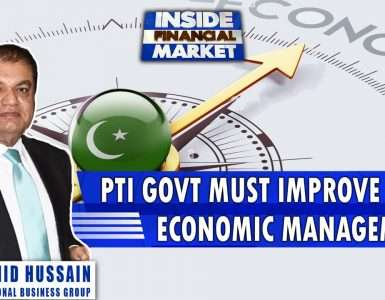Pakistan’s exchange rate has seen considerable upwards revision since last year, as the economy recovered from a meek external liquidity position, strengthening by 5% against the US$ in CY14.
In Pakistan’s case, a strong PkR holds multiple implications because while the economy benefits from relatively cheaper imports (positive impact on CPI), corporations with sizable exports (such as textiles which account for >50% of Pakistan’s exports) lose ground in terms of competitiveness. That being said, the PkR/US$ is projected to undergo measured depreciation (avg. 2.3% p.a. in the next three years vs. 2.5% in the previous three years) as global dynamics continue to weigh.
TIn FY16, PkR/US$ parity is expected to average PkR105/US$ (interbank) implying 3.2%YoY depreciation. Episodes of volatility can remerge from uncertainties over:
- regional currency outlook,
- US fed rate decision and
- domestic lobbying to enhance export competitiveness. Equity market performance is likely to remain immune (weak historic correlation of negative 30% between index performance and PkR/US$ movements) while tailwinds from a relatively weaker PkR should benefit sectors such as Textiles, Power and Oil & Gas.
CURRENCY RECAP:
After peaking at PkR108/US$ in Dec’13, the PkR’s parity vis-à-vis the US$ has seen considerable revision, with the exchange rate now hovering around PkR104/US$ (app: +3.7%). PkR’s strength over the US$ has sustained despite sharp gains recorded by the greenback against most global currencies (Dollar Index posted gains close to 8% over FY15). A key driver for currency strength has been swift fx reserve accretion to historic high of US$18.7bn (import cover: 5m). This coupled with tapering of the external financing gap through a deceleration in imports growth to 2.0%YoY in FY15 (primarily due to a US$3bn savings in oil imports) and surge in remittances growth (+16%YoY in FY15) has largely limited relative volatility of the PkR.However, despite the PkR/US$ parity remaining largely stable in the interbank market since the start of CY15, recent turn in global currency markets post Yuan’s devaluation and consequent risks of competitive devaluation across the region have also had a profound impact on the PkR (interbank) which depreciated by 2.5% (intraday) against the US$ taking CYTD decline to 3.9%. A soft inflation environment has also allowed the Real Effective Exchange Rate (REER) index to gain 7.7%YoY in FY15.
MEASURED DEPRECIATION AHEAD
The PkR/US$ parity is forecasted to average ~105/US$ in FY16E (3.2YoY% depreciation) with annual depreciation to average 2.3% during FY1E-FY18F, escalating to 5%YoY thereafter. Estimates are derived from time-series econometric regression analysis accounting for key drivers, primarily:
- fx reserves,
- inflation differentials and
- interest rates. Downward pressures can emanate from:
- expectations of stronger US$ performance,
- regional currency volatility and risks of competitive devaluation across the region,
- higher debt servicing over the medium term, and
- inflationary pressures re-emerging next year. While pressures for state enforced depreciation to aid trade competitiveness remain, interference from the GoPshould remain limited where a weaker PkR will be detrimental for imports and the external debt position.
FOREIGN RESERVES
Key support to stability:
Fx reserves remain a key determinant of PkR’s direction, whichare anticipated to steadily rise over the medium-term on the back of: 1) remainder IMF tranches worth US$2bn, 2) stability in the current account, 3) increased loan disbursements from multilateral donors, 4) planned foreign debt issuances (US$500bn Eurobond and possibly a US$500mn Sukuk in FY16) and 5) expectations for FDI to pick up as projects under CPEC gather pace. Materialization of the latter will be a key driving force for Pakistan’s external account with potential of over US$8bn foreign investment (assuming planned power projects to come on line with avg. 60% foreign holding) spread over a period of 3-5yrs. However, reserves are likelyto taper FY18 onwards due to relatively higher debt servicing, emanating from: 1) IMF EFF agreement, 2) Paris Club debt and 3) maturity of US$1.25bn Eurobonds. Moreover, with the end of the IMF program and privatization program, pace of foreign inflows will likely slowdown.
CURRENT ACCOUNT TO REMAIN IN CHECK:
With international oil prices expected to remain soft,outlook for the current account remains positive with possibility of a minor surplus (0.4% of GDP) in FY16. Though exports recovery remains improbable (exports projected at US$23.5bn to decline 2.6%YoY in FY16) owing to the country’s low cost competitiveness, benefits from lower imports are in place. A further slowdown in oil imports could result in savings of ~US$3.75bn or 1.0% of GDP (assuming crude oil prices average US$50/bbl) which takes import forecast for FY16 to US$38.6bn (-6.6%YoY).
Healthy remittances growth projected at 14%YoY to touch US$21bn next year and possible CSF payments (~US$700mn in remainder FY16) should provide stability to the BoP position.
REAL INTEREST RATES COUNTER INFLATIONARY PRESSURES:
The recent slide in Pakistan’s price level (CYTD avg. CPI at 2.8%YoY) has also supported PkR’s stability with inflation differential with most trading partners tapering off.
However, inflation numbers are set to turnaround from Dec’14 onwards due to higher energy prices (on gas and power tariff hikes and int’l oil price stabilization). On the flipside, we expect SBP to consequently resort to a hawkish monetary policy where higher than region real interest rates (280bps greater on avg.) should help to curtail pressures on the currency.
GLOBAL DYNAMICS AT PLAY:
PkR’s performance remains hinged on the outlook for the US$ which is likely to gain renewed strength as the US Fed approaches a rate lift-off.Most emerging market currencies, including the PkR couldremain under pressure during CY15 and possibly in 1HCY16. Moreover, the PkR also remains vulnerable to regional currency volatility, triggered by China’s recent move devaluing the Yuan. In this backdrop, the local currency market saw a recent episode of volatility, losing 2.5% intraday in the generally stable interbank market. Further, countries with significant foreign debt securities outstanding remain vulnerable to currency shocks, as debt servicing/rollover can become expensive with lower investment interest in regional markets in the backdrop of Fed monetary tightening.
In this regard, the PkR also faces similar threats from US$1.25bn Eurobonds maturities over the next 2yrs and any increase in regional currency fluctuations. Policy pressures: The central bank has placed considerable emphasis on monitoring exchange rate market liquidity and volatility. While direct intervention has been limited due to IMF reserve conditions SBP has alternatively focused on policy measures (such as allowing dollar imports during peak demand). Moreover, post Yuan’s devaluation, SBP alluded to possible actions to control any heightened volatility from speculative factors. However, the government also remains pressured for competitive devaluation with aggressive lobbying by the exports trade sector.
In this regard, any interference from the government facilitating PkR depreciation can quickly cause the currency to lose ground against the US$. However, we see low probability of state devaluation where 1) erosion of benefits of low oil prices (lost savings of PkR40bn on FY16E oil imports for every 1% depreciation in PkR/US$ parity) and 2) negative impact on expected US$1bn Eurobond and Sukuk issuance in FY16 as well as planned privatizations will be strong deterrents.
PKR overvaluation External risks in focus
To evaluate currency competitiveness, we focus on the REER index estimating its fundamental value which implies that the PkR is overvalued to further underscores thecase for currency depreciation. Based on econometric analysis, the PkRis concluded misaligned over its equilibrium levels by 6.0%. Currency misalignments are assessed through measuring deviations from their equilibrium levels, for which a Behavioral Equilibrium Exchange Rate (BEER) Index is constructed to serve as a proxy for the equilibrium REER value. The BEER index is constructed to reflect the fundamental value of the PkR derived from long-term macro factorsincorporating: 1) productivity measures (government consumption and GDP per capita differentials with trading partners), 2) trade competitiveness measures (trade openness, terms of trade) and 3) recurrent foreign inflows sources (remittances, ex-privatization FDI, multilateral loans).
MISALIGNMENT HIGHLIGHTS
FUNDAMENTAL GAPS:
The recent appreciation in REER is viewed as partly valid, but driven by short-term positive changes.Ailing foreign investment and reliance on one-off flows (such as foreign grants, privatization proceeds and IMF disbursements of US$4.05bn) continue to impede real value enhancement of the currency. The manufacturing sector’s productivity (LSM growth at a meager 3.3%YoY in FY15) and cost competitiveness remain restricted by structural bottlenecks. This implies higher relative domestic prices, as well as widening exports and import gap (trade deficit expanded by 10.7%YoY in FY15) that limit benefits of improved external fundamentals. The country’s terms of trade (exports to import ratio) have come off sharply from0.72x in FY05 to 0.52x in FY15. This coupled with weak foreign direct investment linger as headwinds to PkR’s value. In this context, REER’s recent appreciation
highlights higher dependence on exogenous factors to keep currency value intact.
WINDOW OF OPPORTUNITY:
While long-term structural external vulnerabilities remain, recent improvements in the current account and comfort on reserves has created room for long-term policy development towards attracting greater foreign flows and improving exports base, which are key drivers for sustained exchange rate and BoP stability.Optimism regarding economic growth is derived frompotential benefits of investments directed under the China-Pakistan Economic Corridor (CPEC), particularly related to the energy sector.
IMPLICATIONS Export Competitiveness:
With an exports mix heavily tilted towards low-value goods, the collapse in global commodity prices has been detrimental to external trade, where PkR’s strength over the past year has further aggravated the situation. While Pakistan’s REER has historically been higher than most competitor countries, the gap has widened over the last year, reflecting an expensive currency. India’s REER Index now stands at a discount of ~35% to Pakistan’s
REER compared to 23% last year. Estimated PkR depreciation may bring slight relief to
exports, though the limited quantum of the devaluation is unlikely to be a significant driver for exports growth. This is primarily due to core issues of lower productivity and higher cost inefficiencies from the ongoing energy crisis lingering at least over the short term to keep the tradable sector uncompetitive. While PkR/US$ depreciation may be necessary for relief to exporters, a comprehensive policy to revive exports and a shift towards high-value added goods will be a pre-requisite for unlocking long-term sustainability.
CORPORATE SECTOR IMAPCTS:
With our expectations of PkR/US$ parity to post measured depreciation, companies which have US$ hedged revenue streams stand to materially benefit. In this backdrop, we believe export based sectors such as textiles should benefit as a weak PkR can help gain some lost ground on the competitiveness front. Similarly, the energy sector (e.g. E&P and IPPs) with its US Dollar based revenue streams should receive a boost from weakness in the PkR. On the flip side, import dependent sectors such as chemicals and automobiles can get adversely impacted from PkR depreciation.
EXTERNAL OUTLOOK DRIVES
FOREIGN FLOWS:
Fx reserves at historic highs, shrinking CAD and PkR stability have been the external sector’s hallmark for the current year. With the positive trend on these fronts expected to continue, foreign investor interest in Pakistan is anticipated to sustain. A a stable BoP position accompanied with a comparatively less vulnerable currency can be beneficial for the attraction and retention of foreign flows, particularly in the context of a potential US Fed rate hike affecting frontier market flows. A stronger currency will also support Pakistan market’s strong performance (CYTD 1.75% ranking third globally). With China’s decision to devalue CNY/US$ parity towards a more market-based mechanism and regional currency parities likely to remain weak, PkR retains its potential to outperform other global currencies over the short term.
MARKET REMAINS IMMUNE:
A quick analysis of the historical trend of the KSE-100 index and PkR depreciation indicates
a weaker negative correlation of 30%, which remains indicative of relative immunity
experienced by the local bourse to negative currency trends. This helps our conviction for
market performance, despite anticipating the PkR/US$ parity to weaken. Further, risks for
currency volatility may persist over the short-term. However, a weaker correlation
between currency volatility and the KSE-100 return volatility at 45% indicates negatives
from currency fluctuations to be limited.










Add comment